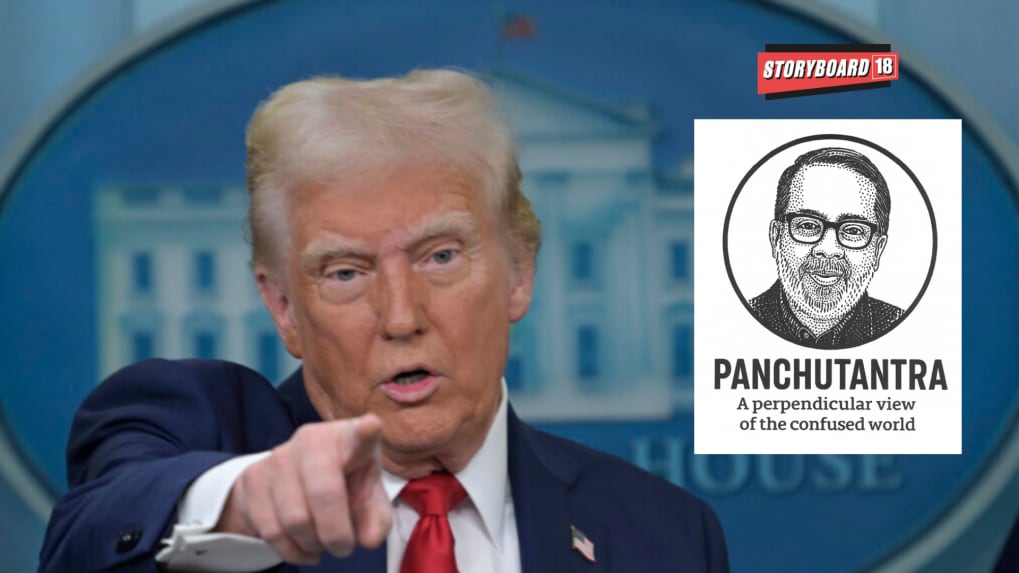Brand Marketing
FMCG firms cut senior roles by 32%; Total headcount shrinks 9.26% in FY25

The US has decided to put higher tariffs on some Indian goods. Why? Because we’ve been buying discounted Russian oil. This is apparently how diplomacy works now — not with handshakes and summits, but with the international equivalent of a passive-aggressive WhatsApp message. It’s like saying, “We don’t like your choice of petrol pump, so your carpets and spices are going to cost more in New Jersey.”
Naturally, I decided to use this opportunity to educate myself about what a tariff really is, and how it’s different from duty, excise, or VAT. As someone whose proudest financial achievement is still not buying Bitcoin in 2021, this was ambitious.
Tariff: A tax on imports or exports. Supposedly, it protects domestic industries. In reality, it’s just a customs official standing between you and the foreign cheese you love, whispering, “Pay up.” Right now, thanks to the Russia-oil-drama, if an Indian carpet lands in Chicago, it costs the same as a one-bedroom flat in Indore.
Duty: The umbrella term for any tax on goods. Tariffs are duties, but not all duties are tariffs Just like all golgappas are chaat, but not all chaat involves you crying into spicy water.
Excise: A domestic tax on things the government thinks are bad for you : cigarettes, alcohol, and sometimes petrol. It’s basically the state saying, “We disapprove of your lifestyle choices… but we’ll take our cut.”
VAT (Value Added Tax): A tax on the ‘value’ added at each stage of production. Which sounds fine until you realise you’re paying VAT on shampoo because the shopkeeper yawned in your direction while handing it to you.
By the time I’d finished reading the government’s official definitions — which appear to be written in a language called Bureaucratese — I realised none of this is meant to be understood. These taxes exist to create that moment at the airport when the customs officer tells you, “Sir, you owe ₹4,320 in duty,” and you pay without asking, the way you once paid a school principal for “miscellaneous fees.”
Meanwhile, the Indian middle class is processing the US tariff news exactly as you’d expect:
• Rajinder Nagar uncles explaining to everyone that Trump is doing this because he’s jealous of Modi’s beard.
• Aunties in South Bombay forwarding messages claiming Californian almonds are now expensive because “America is angry.”
• Your cousin in IT and the ubiquitous “ brand guy” announcing on LinkedIn that these tariffs are a “great opportunity for India to innovate,” which is code for “I don’t know what’s happening either.”
So here we are: America is charging more for our goods, we’re buying cheaper oil from Russia, Europe is sulking about wine, and somewhere in this mess, I just want to buy Gouda without triggering NATO. I’ve decided to support local industry. Only Indian products for me. Starting with Netflix. And we ever slap a tariff on sarcasm, I’m emigrating to Switzerland — where the cheese flows freely, and the only duty I have is to fondue.
Totally Helpful, Not-At-All Confusing Trade Tax Explainer
Tariff: A tax on imports or exports. Or exports and imports. Or maybe imports of exports. The point is, it’s about borders, except when it isn’t.
Duty: Any tax on goods. Except sometimes it’s not a tax but a moral responsibility. Like calling your mother.
Excise: A tax on “bad” things like liquor, cigarettes, and petrol. If you make your own petrol at home, please stop reading and turn yourself in.
VAT: A tax on “value added.” Nobody knows what this means, but if you ever shout “What value?” in a shop, the cashier will pretend the Wi-Fi is down.
GST: The system that replaced VAT. Except VAT still exists. Don’t think about it too hard or you’ll start seeing the number 18% in your dreams.
Bottom line: All of these are just ways for the government to make sure you never fully understand your bill — which is why you pay it. Also, this explanation will self-destruct if you read it twice.
For Puneet Chandok, leadership is as much about the inner journey as it is about external results.
Read MoreFrom the Aryan Khan–Nikhil Kamath–Radico Khaitan luxury launch to Rana Daggubati’s Loca Loka, tequila is shedding its “party shots” image and riding India’s cocktail boom to become the next big premium sipping trend.